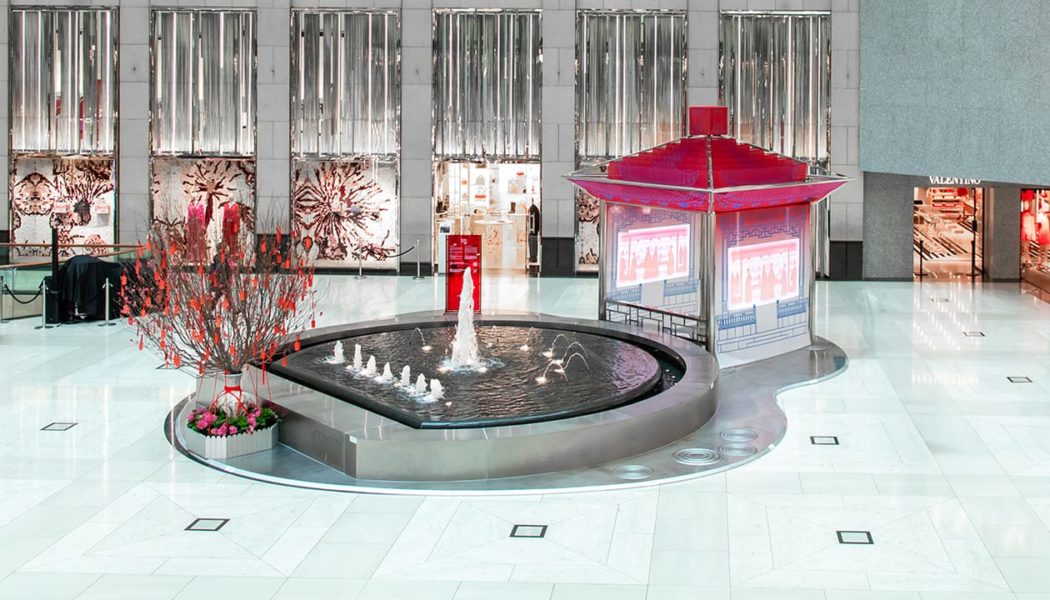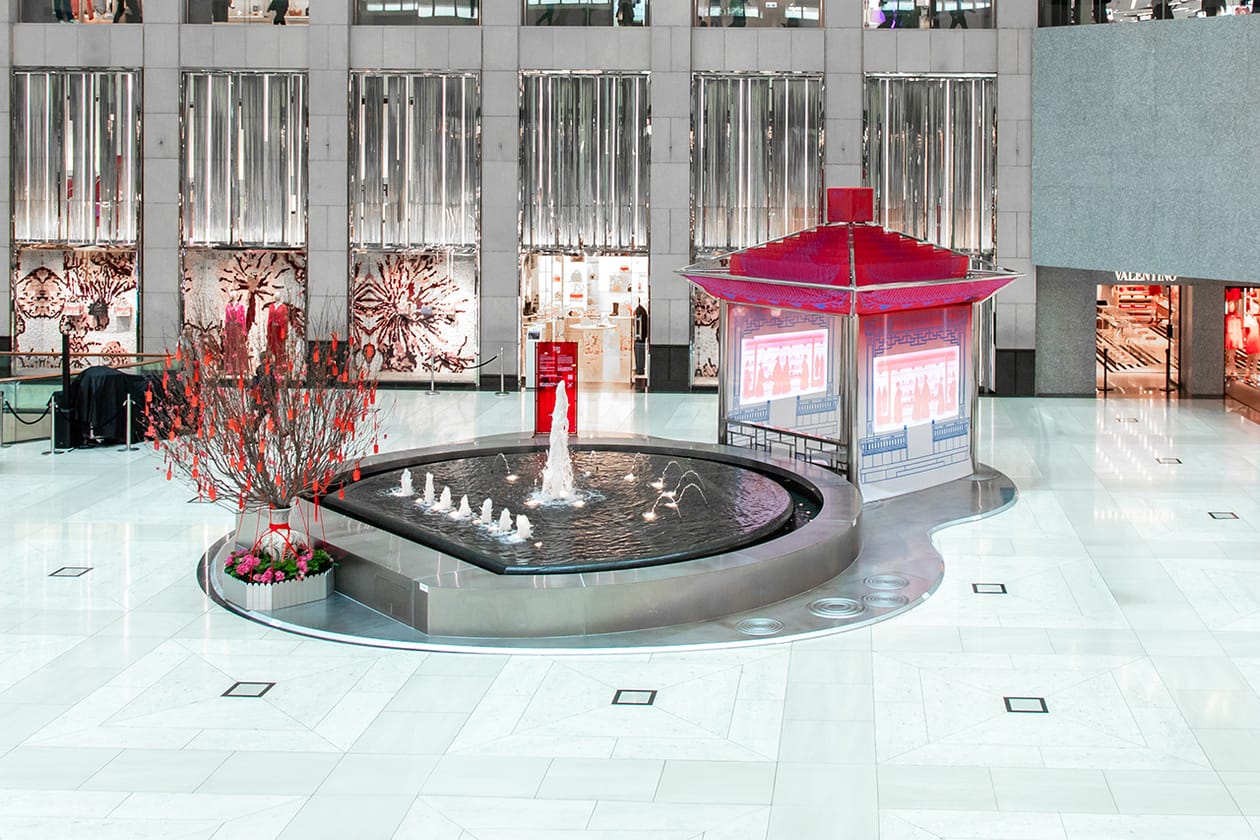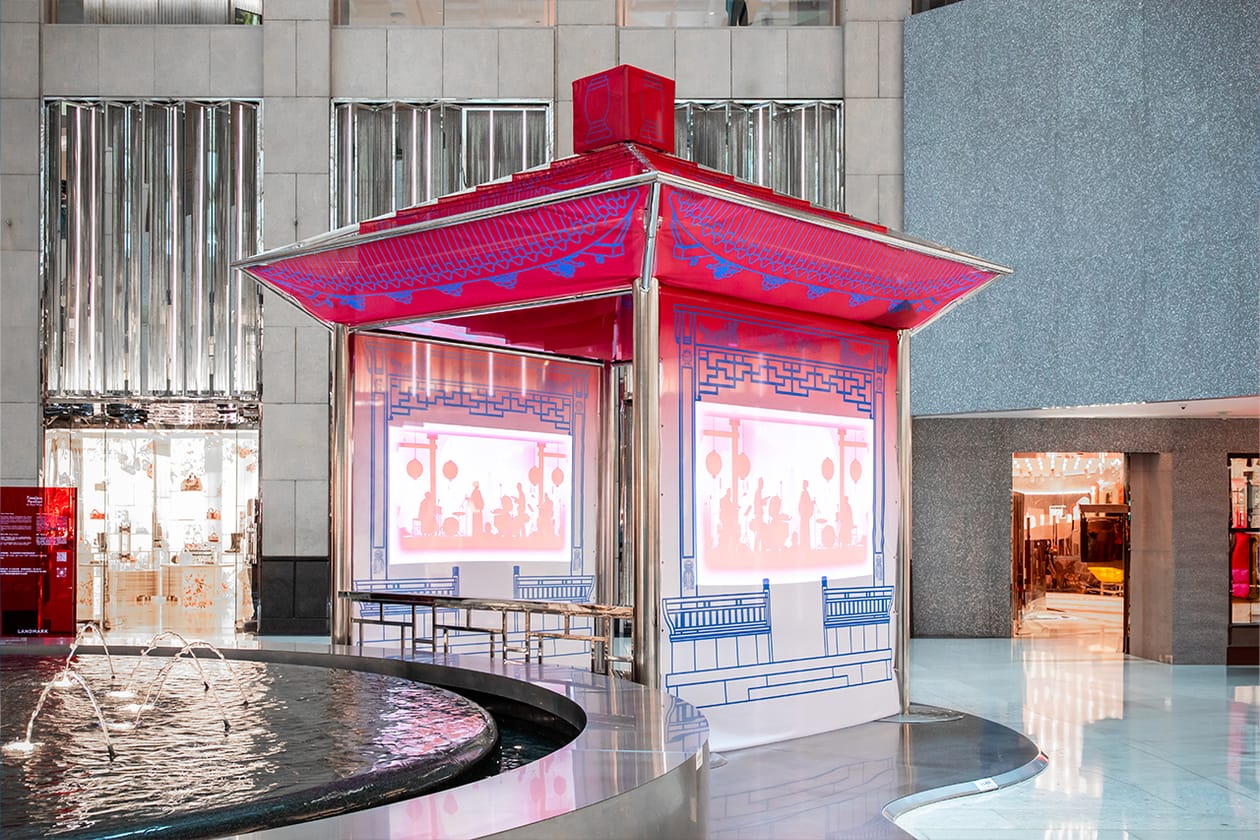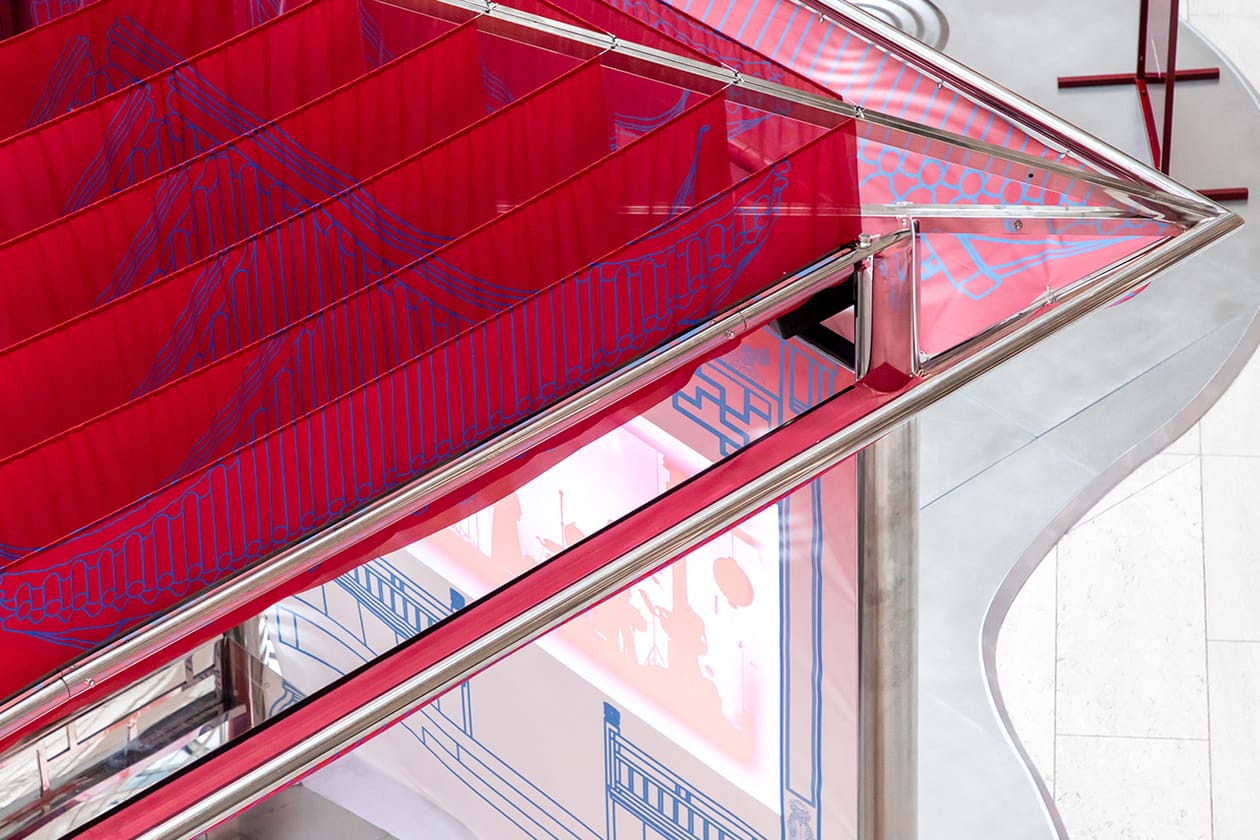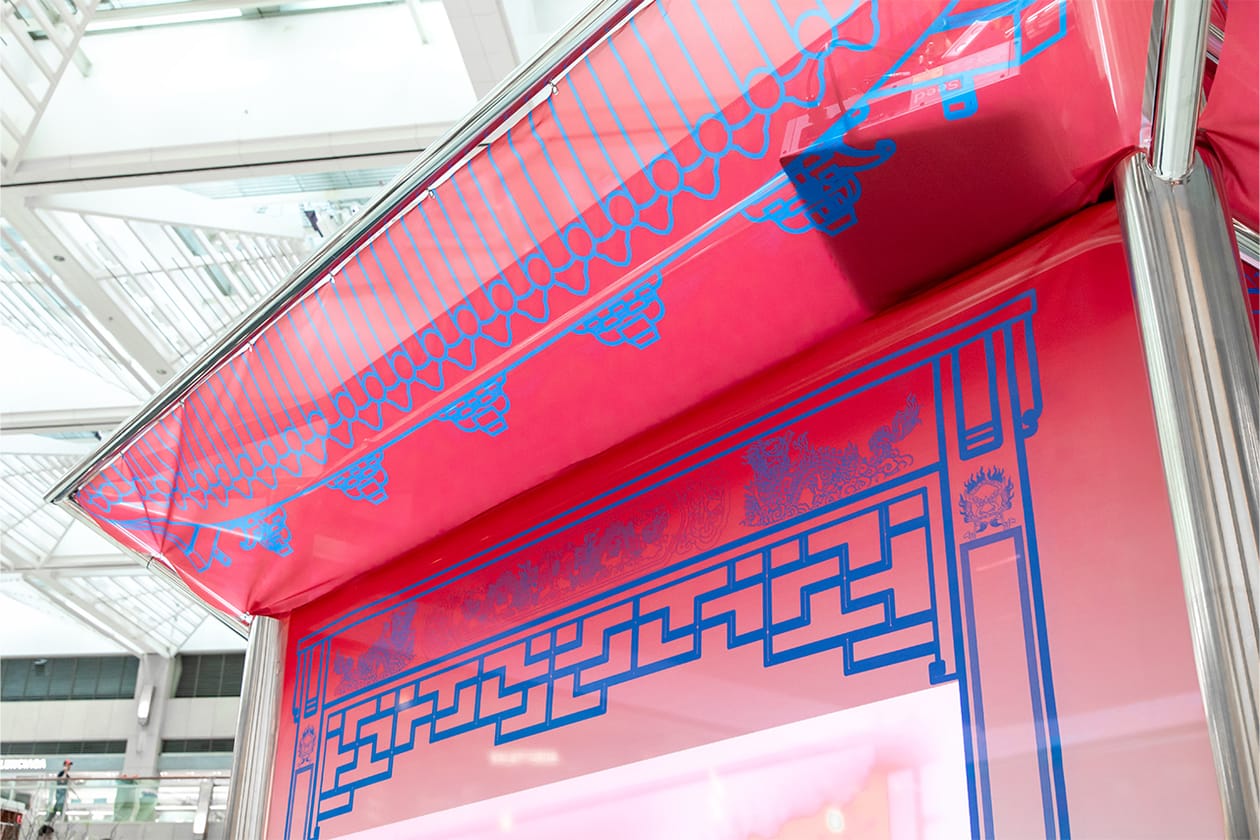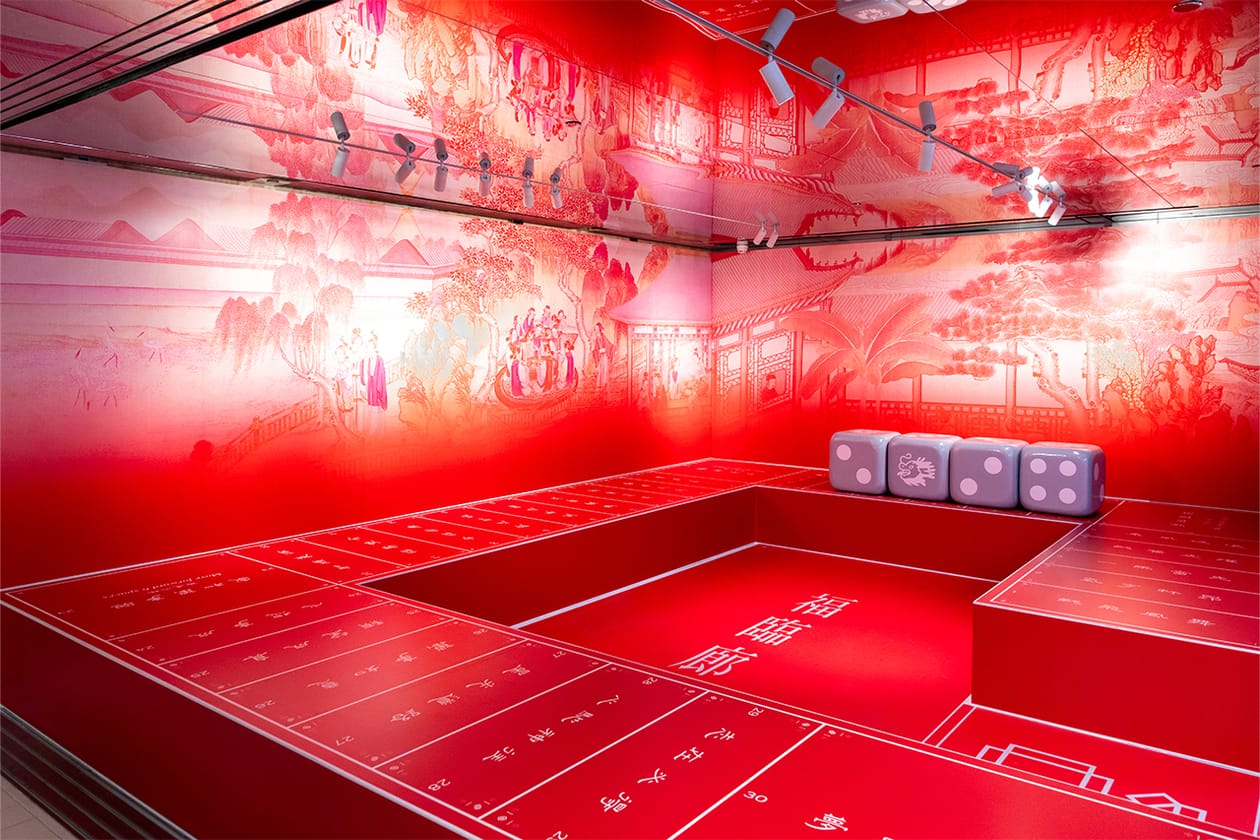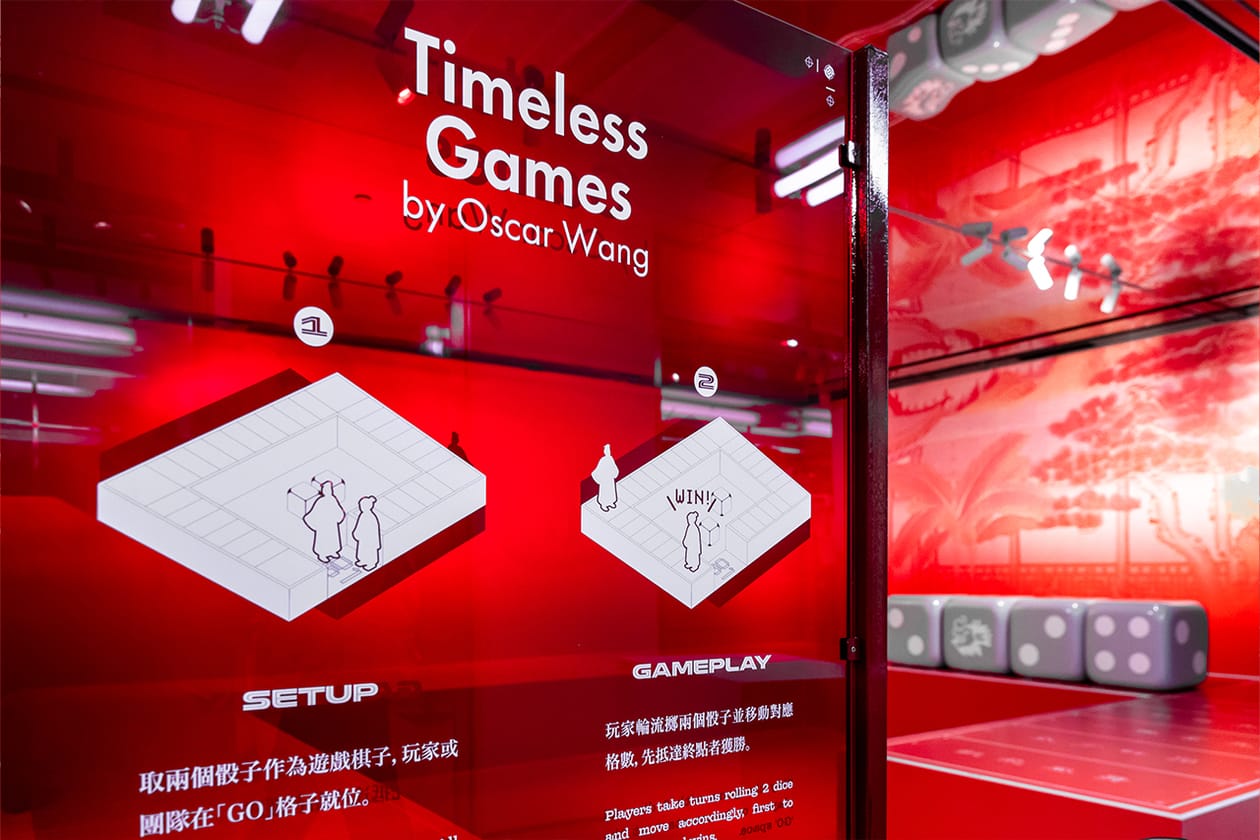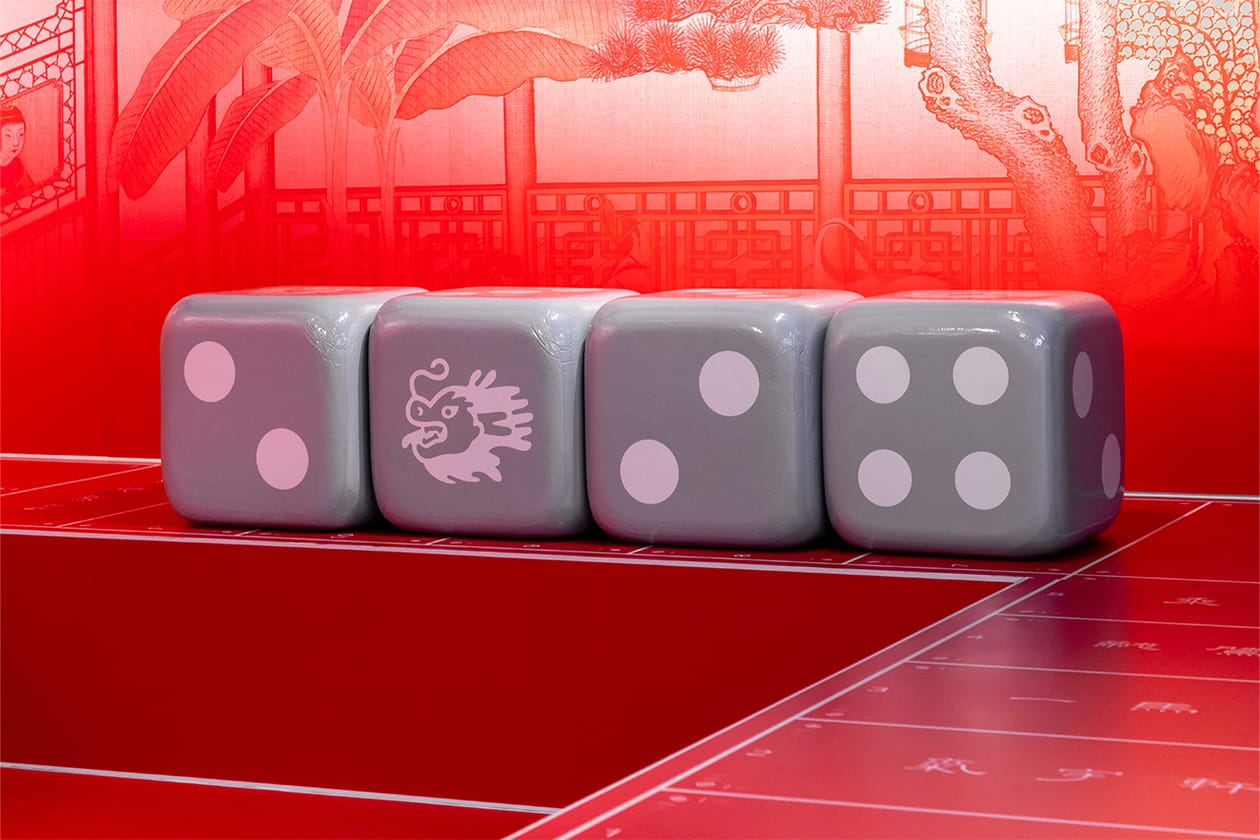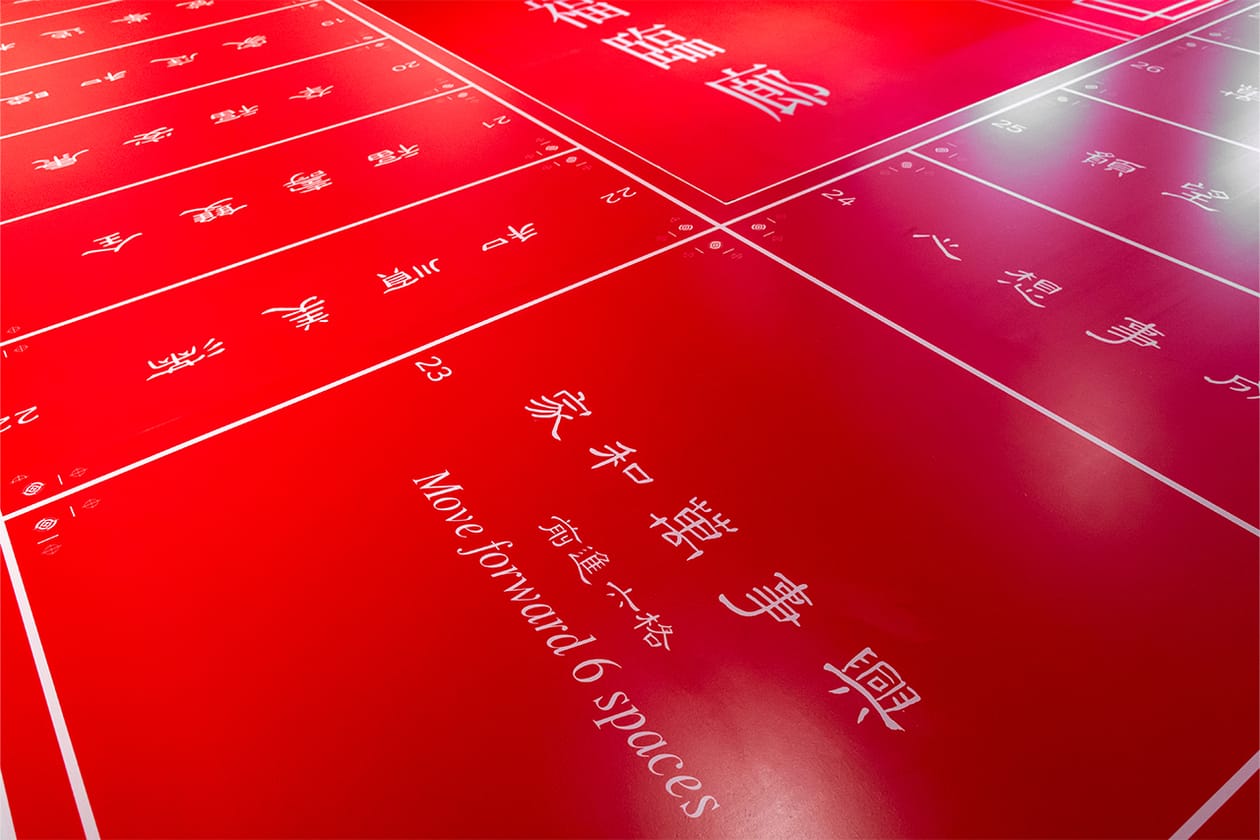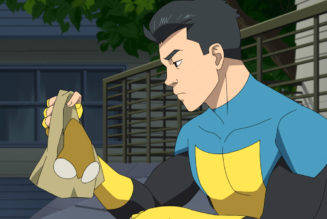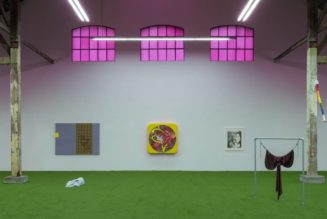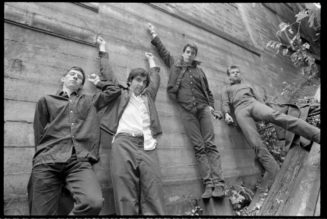Ahead of the Lunar New Year, Oscar Wang has unveiled the “Timeless Pavilion” in Hong Kong’s LANDMARK mall. While Wang has previously collaborated with artists and designers to create large-scale projects of this caliber, the “Timeless Pavilion” is technically the first artistic representation solely by him and his creative studio, Open Work.
An amalgamation of architecture and art, the pavilion complements its ultra-sleek surroundings with Wang’s signature east-meets-west vision. The Shanghai-based multidisciplinary artist also transformed the mall’s BELOWGROUND space into a separate section, dubbed “Timeless Games.” With “Timeless Games,” Wang invites visitors to participate in a life-size board game all the while lounging in the mall’s hybrid retail space.
Ahead of the installation’s opening night, Hypebeast caught up with Wang to discuss the themes and messages behind the project as well as his creative process.
How did you begin the creative process for this project?
I started with digesting the theme, and then went through a process of determining whatever modern-day technique presents. Throughout the pieces in atrium and BELOWGROUND, we used AI to trigger the imaginative thoughts of the theme. I thought about the process and the modern-day techniques I could use to present the work in its ultimate form a lot — whether that’s a digital piece, a physical piece, or a product that comes with [the work].
Of course, I did a lot of brainstorming with my studio, asked a lot of friends, family, and just spoke to people about what they thought of in regards to the theme. For me, Chinese New Year is about family and I wanted to present family in a physical form. The pavilion and the board game I did here are a response to that.
In Chinese culture, a pavilion has a lot of symbolism attached to it. But for you personally, what does the pavilion symbolize?
The pavilion is a place to gather, just like Chinese New Year is an occasion for families and loved ones to gather. A pavilion exists in a park, in the mountains and in a lot of places where nature exists. So to bring a pavilion into a man-curated structure is a reminder that we’re connected to nature as well. I jog and run a lot in Hong Kong, where I often bump into these “長輩” (elderlies) doing Tai Chi and stretching in these spaces. I wanted to bring a little bit of that authentic spirit of Hong Kong into LANDMARK with “Timeless Pavilion.”
Could you tell us more about the concepts and themes that are explored in the digital animation that’s projected onto “Timeless Pavilion?”
The design language is still about going back to the blueprint, where I take a lot of existing technical drawings and apply them on top of physical surfaces. That’s a recurring theme I revisit a lot to express an appreciation for culture and design — we all come from a sort of blueprint after all. So, on top of the screens, you’ll see the pavilion’s blueprint along with technical drawings on the outskirts.
In the middle of that will be the projection of the animation. I used AI for this type of projection, as it’s a very common theme of the moment. I also used a few programs to generate the images and to create movements. The characters are actually in “古裝” (ancient attires) but they’re doing modern things. They’re watching TV, they’re running track, they’re taking photos, they’re shopping — these are all related to the theme but in a style reminiscent of shadow puppets. It’s just something for people to gaze upon and to ponder without being too serious. It’s not like a movie or an animation series, but if you walk by it and see something that catches your eye, you can stand still and watch it.
“A pavilion exists in a park, in the mountains and in a lot of places where nature exists. So to bring a pavilion into a man-curated structure is a reminder that we’re connected to nature as well.”
Looking around, there are a lot of historical references in the design of “Timeless Pavilion.” From Chinese paintings-inspired wallpaper to old board games, how did you gather these inspirations in one place before you began your creative process?
So I started with where I come from. Chinese culture has a long lineage of history and is a very old civilization. For such a rich culture, I wanted to present it in a space with my minimal designs using modern-day symbols, along with AI and my blueprints. I thought of this way to put them together, but I also want people to be reminded that we come from history without being too hardcore on elements such as Chinese calligraphy and ink painting. It does look like an old painting, but the color palette uses a different spectrum of red and it’s a little easier on the eyes.
Sound accompanies the space as well, which rings back to the theme of the five senses — a recurring theme in all my projects. You can hear this very peaceful music that I curated for “Timeless Games” while you’re in the installation.
Is the soundtrack incorporated into the space also inspired by nature?
It’s based on the concept of “鬧裡取靜” (finding peace amidst the noise). We live in such a busy world, so I wanted to create a place where you can calm down for a minute and enjoy your existence. It’s visually stimulating but spiritually meditative.
How did you develop this concept?
There was a lot of back and forth at first, as the team had to grasp how to present Chinese culture in a modern way. People tend to go for the low-hanging fruit, coloring everything red and throwing dragons on it. But they did forget that in all this chaos of CNY with many people celebrating, there are the finer things. I wanted to digest the CNY theme as a whole and bring out “our” way of presenting it.
From the concept, development to building the installation, roughly how long did it take?
It took around three to four months to develop the idea, with the back and forth on making sure the message was there. I would like to have a bit more time. With so much heart and soul into this, it just requires a bit more time to bring it into a physical space.
You mentioned that the BELOWGROUND section of your installation is based on “飛行棋” (Airplane Chess). When you first thought of the idea, did you consider any other other type of Chinese board games?
I did think of Chinese chess, but it doesn’t really represent togetherness. It’s more of a 1v1, battle-type game and was a little Monopoly-esque. Each box has its own rules and a bunch of stuff is needed to create the whole game. So I thought, why not just simplify things and let people throw some foam dice around, take some pics, finish the game quickly and then they can post it on social media and feel like they were part of something? I think simpleness is something that’s quite crucial right now in life. We thought about other games too, but we went with this one instead as it seemed the easiest to understand, play and experience.
Ultimately, what do you hope visitors can get from the experience?
I think the space in BELOWGROUND is a place where people can gather and rest but also interact. We live in a very digital world right now, and gathering people in one space is not so easy anymore — that includes the pavilion itself. It’s the whole idea of wanting to bring my loved ones here to hang and maybe have a juice — that’s the whole purpose of this space.
Or maybe you just want to see a bunch of people here playing the game. It could be as simple as that, but at least you’re physically doing something. Instead of playing on your phone or computer and watching Netflix, maybe come hang for five minutes and do something human-related.
Is that all part of the experience you want your visitors to receive?
Yes, I want them to be triggered and to think of something else rather than what’s going on in the crazy world we live in.
“I think the space in BELOWGROUND is a place where people can gather and rest but also interact. We live in a very digital world right now, and gathering people in one space is not so easy anymore…”
What are your plans for the Lunar New Year?
To spend time with my family. My parents are flying in from New York to support the opening. My wife is coming in tonight, and my 97-year-old grandmother is also gonna rock by in her wheelchair. It’s all about family for me.
What other projects are you planning next?
Back to the fundamental big theme this year, I will definitely be pinpointing more on one of the fives. Depending on the project, there’s going to be performance art, product design, furniture, and something fashion-related coming up later in the year. Hopefully more large-scale installations and maybe something to do with “taste.” Maybe something food-related with a very well-known Michelin-star restaurant where we could co-create something interesting. For me, it’s about breaking boundaries with the five senses and finally, in search of the sixth — that’s a little chapter that I have in my mind.
Oscar Wang’s “Timeless Pavilion” and “Timeless Games” will remain on view until February 25, 2024.
LANDMARK
15 Queen’s Road Central,
Central, Hong Kong
